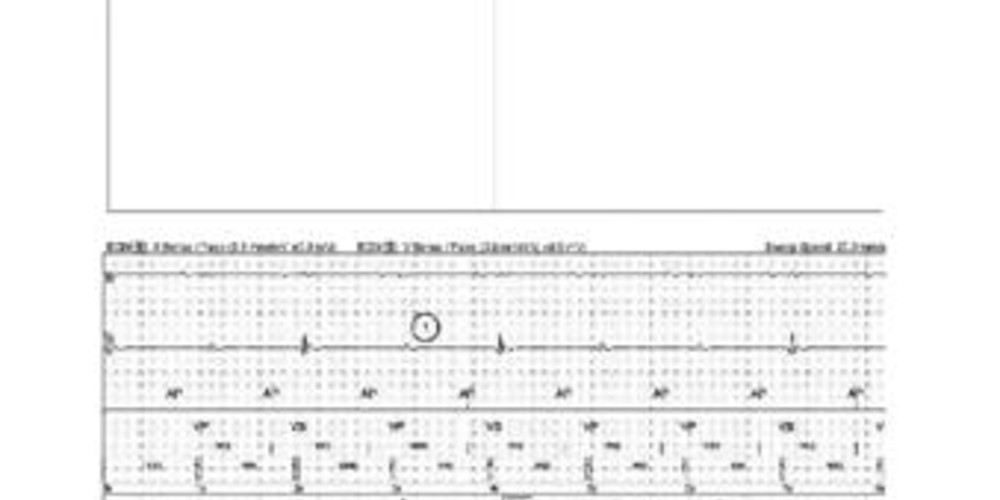Non-sustained ventricular tachycardia with charge of the capacitors
This 64-year-old recipient of an Atlas dual chamber ICD for ischemic cardiomyopathy, with a 20% left ventricular ejection fraction and multiple episodes of non-sustained ventricular tachycardia (VT), underwent routine device interrogation. He was being treated with a beta-adrenergic blocker.
Main programmed settings
- VF zone at 222 bpm and VT zone at 160 bpm
- 12 cycles in each the VF and VT zones were needed for a diagnosis
- Highest sensitivity programmed at 0.3 mV
- VF zone: six 36-J shocks (maximum strength); VT zone: 3 bursts of antitachycardia pacing (ATP) followed by a single 8-J shock, followed by a single 22.5-J shock, followed by 2 shocks of maximum strength
- Effective discrimination in the VT zone
- DDIR pacing mode at 60 bpm; post-shock DDI pacing mode at 60 bpm

Narrative
Episode of non-sustained VF and aborted shock.
Tracing
1: Atrial paced rhythm with alternans of paced and sensed rhythm in the ventricle (AP-VP, AP-VS);
2: The initial cycles of the tachycardia were unclassified (-); the instantaneous intervals were in the VF or VT zone, while the mean intervals corresponded to the sinus zone; the device interpreted this as a transitional rhythm and did not classify the intervals;
3: After 4 F or T classified cycles, the episode pacing mode was DDI;
4: Fast VT classified in the VF zone (F) with atrioventricular (AV) dissociation (more ventricular than atrial events); diagnosis made by the device after 12 F cycles (VF counter full); the morphology criterion favored a ventricular origin (x, 0 for the majority of cycles), although, in the VF zone, the device does not discriminate the origin of the tachycardia; trigger of the electrograms (EGM) recording and start of the capacitor charge;
5: Spontaneous termination of the VT;
6: Interruption of the capacitors charge after diagnosis of return of sinus rhythm (5 VP or VS cycles without intervening T or F cycles); DDI post-shock pacing mode, even in absence of shock delivery.







When the ICD was interrogated, multiple episodes of non-sustained tachycardias in the VF zone were retrieved from the stored tracings. While the episodes were relatively brief, they prompted repetitive charges of the capacitors, without prompting the delivery of shocks. Since this arrhythmia originated from a ventricle, the delivery of a therapy by the ICD would have been appropriate, however clinically unnecessary, since the episodes were self-terminated and hemodynamically well tolerated. The detection time should have been lengthened sufficiently to enable the spontaneous VT termination and prevent the repetitive charges of the capacitors, without jeopardizing the patient’s safety. In this particular patient, the number of cycles needed for the diagnosis of VF should preferably be increased to 16. When the charge is interrupted and the shock is not delivered, the device clears its capacitors and the stored energy is nearly completely dissipated within 1 min after interruption of the charge.